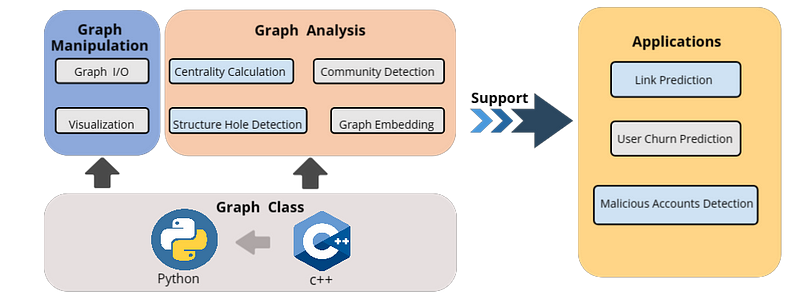Quick Overview of EasyGraph: A Multifunctional, Cross-Platform, and Effective Library for Interdisciplinary Network Analysis
A graph is a primitive representation of relationships between entities, and it allows for a profound and direct understanding of the associations in the world. Typical applications of graph data include social networks, transaction data, knowledge graphs, transportation systems, biotechnology, etc. Social networks are a specific type of networks which are built upon the foundation of networks and guided by certain sociological theories.
Graph Analysis focuses on analyzing the strength and direction of relationships between entities in graph data, thereby uncovering features and assisting in decision-making.
EasyGraph is an open-source network analysis package based on the Python and C++, developed by the DataNet team at Fudan University. Compared to existing open-source libraries focusing on graph analysis such as igraph and NetworkX, EasyGraph offers a more comprehensive set of social network analysis methods grounded in sociological theories. Its main functionalities include the following:
-
The first open-source library that includes a comprehensive set of structural hole spanner detection methods (for more understanding of the structural hole theory)
-
Graph embedding algorithms like DeepWalk, node2vec, LINE, SDNE, etc.
-
Classic network algorithms for community detection, centrality analysis, component analysis, clustering, etc.
-
Improved runtime efficiency through hybrid programming and parallel computing.
-
A collection of visualization methods for complex networks.
-
Including various classic datasets.
EasyGraph’s structure:

With this architecture, EasyGraph can be applied in various domains such as biology, transportation, chemistry, social sciences, ecology, and more for graph data analysis.
Take a deeper look into EasyGraph:
Documentation:EasyGraph
Quickly start through Video Tutorials:Tutorials — YouTube